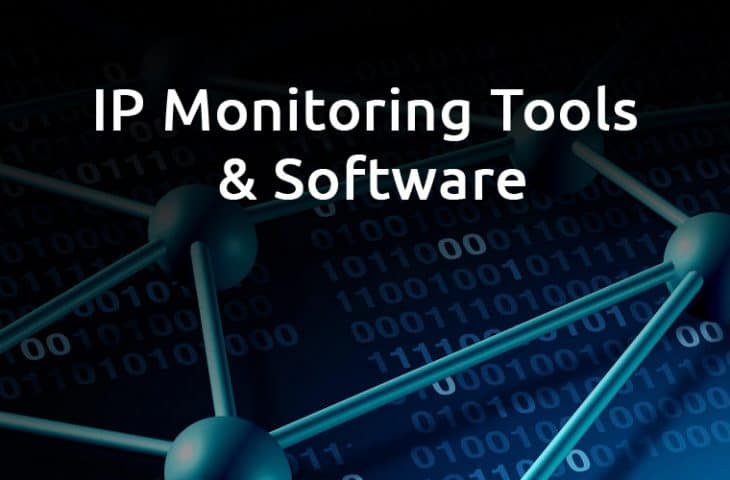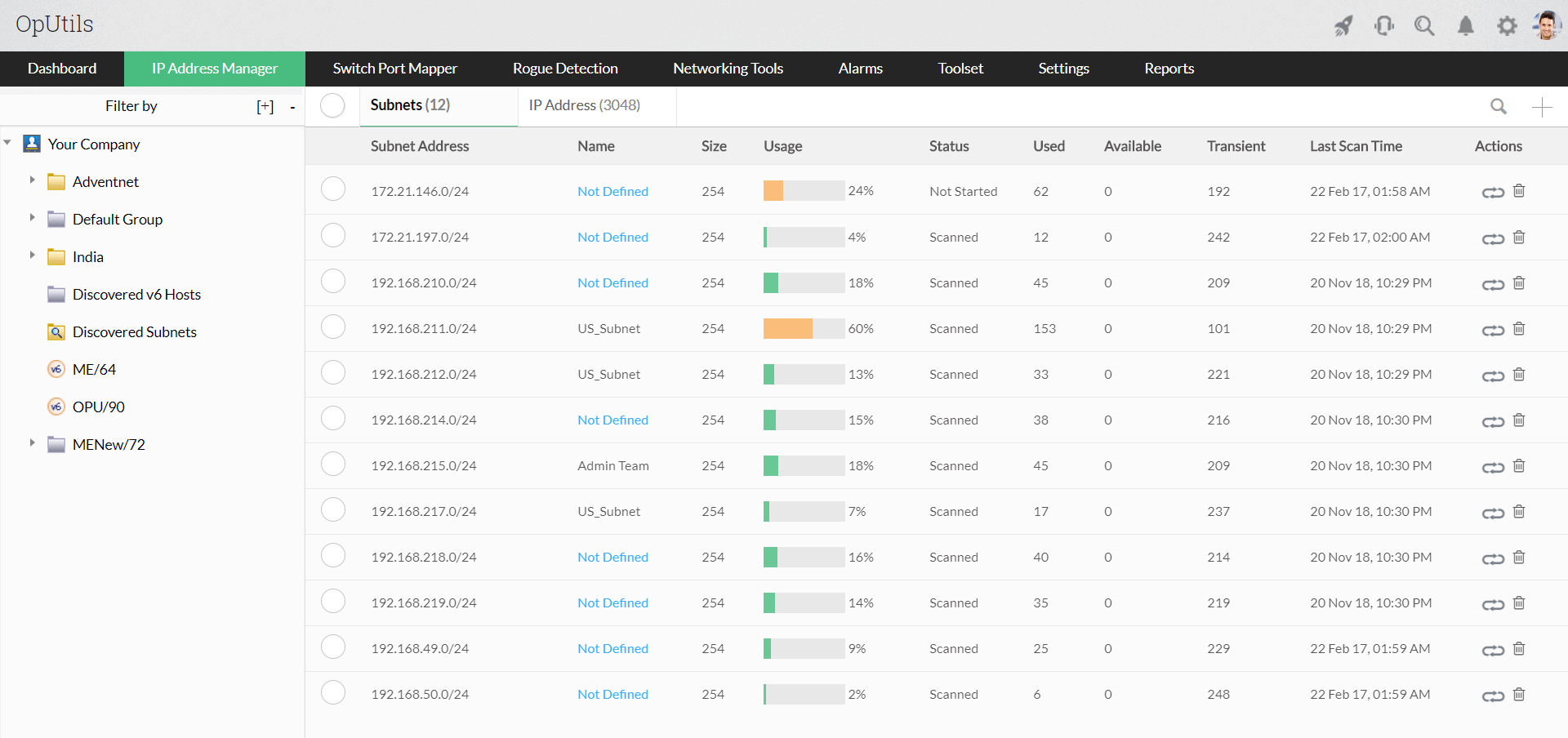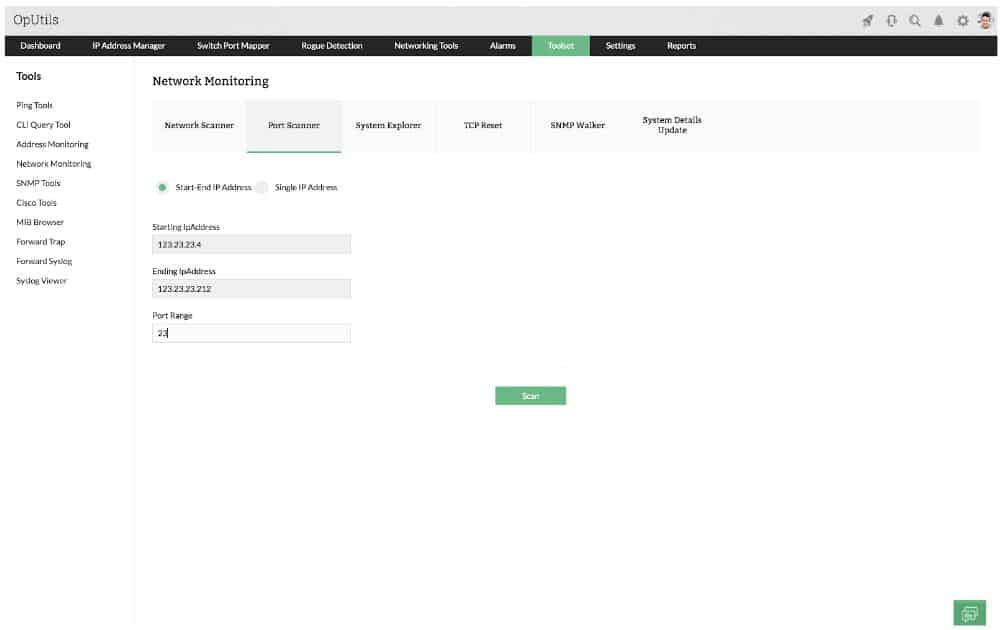Our funding comes from our readers, and we may earn a commission if you make a purchase through the links on our website.
The Best IP Monitoring Software to Keep Critical Servers Monitored & ONLINE!

UPDATED: November 6, 2023
Having a highly available network has become a critical factor for any business. A small service downtime or a traffic bottleneck can represent a big revenue loss. Networking experts and industry leaders are aiming for networks that maintain a 99.99% availability to avoid any kind of loss.
A big piece of the puzzle to maintain that kind of availability is to implement IP Monitors and Alerting systems. Using a centralized IP Monitoring software ensures that all components are up and running smoothly. The core function of these tools is to keep an eye on critical IP-connected devices and services in real-time.
Here[‘s our list of the best IP Monitoring tools:
- ManageEngine OpUtils – FREE TRIAL This bundle deals with network addressing issues and includes an IP address manager, a switch port mapper, and a logical port scanner. Offered for Windows Server, Linux, and AWS. Download a 30-day free trial.
- Paessler PRTG – FREE TRIAL This flexible package lets you decide which monitoring tool to turn on and its base system includes a network scanner that gives you a full list of all devices with their IP addresses and statuses. It also dares up a network topology map. Available for Windows Server and as a SaaS platform. Get a 30-day free trial.
- PA Server Monitor While primarily focused on server monitoring, this package includes a Ping utility that you can set to run periodically and check the availability of all devices. Installs on Windows Server.
- VisualPulse This is a continuous Ping sweep that discovers all devices on your network and provides response times. Runs on Windows.
- Nagios Core A free full stack monitoring package that includes a network discovery routine. Available for Linux.
- Zabbix A free monitoring package for networks, servers, and applications that includes network discovery with IP address monitoring. Runs on Linux, cloud platforms, or Docker.
On the basic level, these tools will automatically send pings to check response and raise alarms and notifications when a failure occurs. Having this access to this information allows you to act quickly and avoid problems before they occur.
Some benefits of monitoring your IP Network include:
- Keep server Availability Close to 99.99%.
- Improve Server Performance and predict Trends by Analyzing Statistics.
- Keep an Eye on your Server anywhere and from any device with online web-interface monitoring services.
- Send Real-time Alerts or Activate a Script when a certain threshold level is reached.
Here's a List of the Best IP Monitors:
The following list of IP monitoring software will help you to keep an eye on all critical servers. We included their extra features, their official download site, and the pricing plan if it was publicly available – as some of these Software manufacturers tend to not post them on their sites.
1. ManageEngine OpUtils – FREE TRIAL
ManageEngine OpUtils is an IP address manager that will constantly poll the network, discovering all IP addresses in use The tool produces a report that you can you to reconcile IP address pools in your DHCP server and identify abandoned addresses to return to the pool for reuse. You can also use the list to check the hostname allocations in your DNS server.
Key Features:
- The important utilities in OpUtils are:
- Device discovery
- IP address conflict discovery
- A logical port scanner
- A switch port mapper
- A free IP scanner
The switch port mapper in the OpUtils package scans your network switches and documents each interface, noting which device is connected to each port. The logical port scanner examines each endpoint, looking at the TCP and UDP ports, identifying which are open.
If you don’t need a full IP address manager, you could opt for the Free edition of OpUtils because that just provides an IP address scanner. You don’t get the switch port mapper or the port scanner with that version. Both the free and paid versions install on Windows Server or Linux and you can get OpUtils as a service on AWS Marketplace. ManageEngine offers a free trail of the Professional edition and if you don’t buy the tool at the end of that period, your installation switches over to the Free edition.
Pros:
- IP address management that works with Microsoft’s DHCP and DNS servers
- Port scanning for security
- Free version with just an IP scanner
- Automated alerts for addressing issues
Cons:
- No SaaS option
Get a 30-day free trial.
2. Paessler PRTG – FREE TRIAL
An IP/network scanner and monitor software to keep an eye on critical servers. Paessler PRTG’s unified monitoring is used not only for network devices but also for bandwidth, servers, apps, virtual environments, IoT and more.
Key Features:
- Packet Sniffing and Netflow sensors for Cisco devices, extend the discovery functionality and lets you analyze your traffic much deeper.
- Adapt PRTG to your needs using its powerful API.
- With the built-in notification function, you can customize alarms, so that you can be alerted via text message, SMS, email, on-page, etc.
On the basic level, PRTG automatically pings an IP or range of IPs and begins to monitor the status of the associated devices. The tool also uses SNMP sensors to provide a quick overview of the network and summary of the traffic going in and out. The centralized dashboard uses different colors to organize the statues of the network elements. You’ll see green when everything is running smooth and jump into the red when there is a failure which also activates various actions, such as notifications, alerts or remediation scripts.
PRTG apps let you check your network remotely, anywhere and from any device. Its online monitoring platform lets you control the entire network from a single web interface.
Pros:
- Uses a combination of packet sniffing, WMI, and SNMP to report network performance data
- Fully customizable dashboard is great for both lone administrators as well as NOC teams
- Drag and drop editor makes it easy to build custom views and reports
- Supports a wide range of alert mediums such as SMS, email, and third-party integrations into platforms like Slack
- Each sensor is specifically designed to monitor each application, for example, there are prebuilt sensors whose specific purpose is to capture and monitor VoIP activity
- Supports a freeware version
Cons:
- Is a very comprehensive platform with many features and moving parts that require time to learn
PRTG is free for up to 100 monitoring sensors. To figure out your network requirements you can register for a 30-day free trial.
3. PA Server Monitor

Power Admin “PA” offers an Agentless Server and Network Monitoring tool. The tool can monitor the performance of Windows, Linux, and different vendor network devices.
Key Features:
-
- Monitors a large volume of devices, and extends that through its satellite monitoring service.
- Swap failed server to a standby with automatic failover.
- Extensive reporting. The tool can create status reports for devices, servers, uptime, historical stats, etc.
- Intelligent alert and response system. PA Server Monitor can send customized emails or SMS, and if necessary it can automatically restart services or execute scripts to minimize downtime.
The tool doesn’t rely on agents to gather information. Instead, it sends automatic pings to check the health of network elements. PA Server Monitor does not only monitor network resources, it also monitors disk space, memory, disk, SNMP + traps, web page content, services, event logs, processes, etc. And if you are on the go, you can still monitor all your devices through remote monitoring using secure port 443, or HTTPS web-interface.
Administrators like PA because it is designed with security in mind. The software does not keep any data in the cloud; it keeps everything on the servers.
Pros:
- Lightweight agentless monitoring
- Can ping multiple devices simultaneously across the network
- Can set and receive alerts when pings fail
Cons:
- Better suited for small to medium-sized networks
PA offers a free 30-day full-featured trial. The software can be purchased on four different licenses. Choose what matches your needs from the following types, Lite, Pro, Ultra, and Corporate Ultra.
4. VisualPulse

A real-time IP monitoring software that allows you to check hundreds of devices simultaneously. VisualPulse IP Monitor does not only makes sure that IP addresses are responding but that they are also performing well.
Key Features:
- Online network management with remote access through its web-interface.
- Intelligent automatic notification systems. Provide instant alerts based on thresholds to email or SNMP-traps.
- Monitor up to 500 devices/services simultaneously.
- Real-time and historical reports show the reasons for IP packet loss.
To make sure that your network is performing correctly, its browser allows you to access key metrics like ping latency, packet loss, downtime, response time, errors, and even TCP/UDP/SNMP total I/Os.
You can define thresholds on these metrics to differentiate devices by how they are responding and get notified when certain threshold is reached. With these data in hand, you can create detailed reports in HTML or XLS and get a better understanding of your network, spot patterns and identify potential failures.
Pros:
- Offers real-time IP management
- Can monitor various metrics in a single view
- Includes historic search of IP metrics
- Can monitor up to 500 device at once
Cons:
- Interface could use improvement
- Trial could be longer
Try VisualPulse completely free for 15 days. Starting at standard edition for license only on 10 elements at $295.00. Find more information on the official price list.
5. Nagios Core

Nagios is an industry standard IT infrastructure monitoring software developer. Nagios created the free and open-source Nagios Core to keep critical servers monitored online.
Nagios Core was created with flexibility and scalability in mind. The core feature set can be extended through the use of a thousand different add-ons. This tool was designed to run natively on Linux systems but now it can support Windows as well.
The software monitors elements by scheduling, handling, processing, and alerting the basic events. This tool does not check performance, send notifications, or processes performance data. These tasks are left in the hands of other Nagios projects.
Key Features:
- It can be extended to perform more tasks with it multiple APIs provided by a strong community of users.
- Allows agent and agentless monitoring.
Some add-ons out-of-scope by Nagios Core, include auto-discovery, configuration front-ends, graphics performance, distributed monitoring, and many more.
Pros:
- Simple, yet informative interface
- Flexible alerting options support SMS and email
- A wide range of community-designed plugins are available for free
Cons:
- The open-source version lacks the support found in paid products
Get Nagios Core from its official site – open source and free.
6. Zabbix

A free and open source monitoring software, Zabbix is a comprehensive tool for monitoring networks, operating systems, and services. It can help you keep an eye on critical server performance metrics and ongoing incidents.
Key Features:
- Out-of-the-box templates with pre-configured items, graphs, triggers, web scenarios, apps, etc.
- Auto-discovery of new devices or configuration changes.
- Detect problems with proactive network monitoring and flexible trigger expressions.
- Monitor and run commands on servers remotely, over the Internet and through firewalls.
There is no need to install agents on the monitored hosts. Just allow basic services such as SNMP, ICMP, TCP, SSH, IPMI, or Telnet to send simple checks to verify server availability and responsiveness. If you want extended monitored services, you can install the agent on either UNIX or Windows and monitor metrics such as CPU load, bandwidth, disk space, network and memory utilization, etc.
Pros:
- Open-source transparent tool
- Uses both SNMP and ICMP for a broader monitoring range
- Can detect new devices and configuration changes immediately
- Offers useful templates for quick insights
- Robust notification system supports SMS, email, custom script, and webhook
Cons:
- Would like to see better alerting features
Get and install Zabbix from its official site – free and open source
Conclusion
There is no good monitoring software that can improve a badly implemented network – Good IP Monitoring practices start with the skills of the Network Admin or Manager. Having a good network plan and design, infrastructure installation, IP addressing scheme, Monitoring and Operation plan is the real key to a 99.99% available network.
But, there are Tools in the admin’s toolbox that can make life much easier…
The seven IP Monitoring Tools and software described above are considered the best and will definitely help the network admin perform a better job. Get more details from their official sites and give them a free download and install to see which one suits your network needs.






